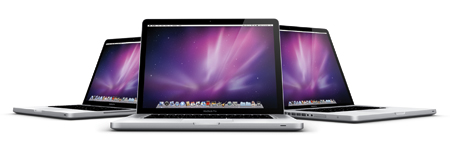Apple's 2010 MacBook Pro refresh has introduced support for Intel's Core i5 and Core i7 processors, as well as what Apple describes as a "new automatic graphics switching technology".
We'd assumed Apple was simply referring to NVIDIA's Optimus technology, but it turns out the MacBook Pros have something new under the hood.

According to Ars Technica, Apple's GPU switching technology is unique in that it's largely handled by the Mac OS X operating system. By default, any applications making use of intensive graphics rendering engines such as OpenGL or Quartz Composer will automatically trigger Mac OS X into enabling the discrete NVIDIA GPU - which in the case of the 15in and 17in models is a GeForce GT 330M.
That'll mean Intel's HD Graphics IGP will be used only for all the mundane tasks, but how is that any different to NVIDIA's Optimus? Both set out to achieve a similar goal - seamless switching from one GPU to another - but it seems the Apple implementation has its sights better focused on battery life.
Cast your memory back to our February review, and you may recall that NVIDIA Optimus technology feeds frames directly into the IGP's controller, irrespective of where the processing is coming from. As a result, the IGP in an NVIDIA Optimus system is always powered on - whether or not the discrete GPU is doing the grunt of the work. In comparison, Apple's GPU switching technology is said to power down the IGP when the discrete GPU takes over - saving battery life as a result.
The savings from a disabled IGP are likely to be minimal, but could add say an extra 30 minutes of life to a portable system. What's interesting, however, is that Apple describes its switching technology as seamless. Considering that it doesn't seem to channel graphics from both its sources through a single frame buffer, we'd expect the Apple implementation to result in some form of screen flicker or momentary pause as the system switches from IGP to discrete GPU output, and vice versa.
Apple's software currently allows for two GPU switching options; automatic switching can be enabled, or the notebooks can be set to run with discrete graphics at all times. There's no option for IGP-only, but it's a marked improvement over the previous-generation MacBook Pros - which you may remember required the user to log in and out of the operating system each time a GPU switch was required.
It all sounds promising - if not the best notebook GPU switching technology to date - but we're eager to see exactly how seamless it really is, and whether or not Apple's quoted battery life of 8 to 9 hours lives up to real-world usage.













